Last weekend I was doing a bit of deep cleaning in the shed when I stumbled across a box of old VHS tapes.
Its been at least a good 20 years since I last played a VHS tape, so I was a bit mystified as to why I would be holding onto a box full of these things. Since the intent was cleaning out the shed, these tapes now had a long-overdue date with the recycling bin.
But before I sent them on their way, I felt that it might not be a bad idea to at least take a quick look at the contents of the tapes. If there were some treasured memory stored on them, I should probably rescue them before they were permanently lost.
Luckily I still had a VHS player that was still operational and also had a DVD recorder on hand. The plan was to record any contents that I wanted to save from the tapes to a DVD.
I also had a small DVD player that had an integrated screen with input jacks on the side which would allow me to display audio and video from an external source on the player's screen.
I had the makings of a fairly compact video transfer station. I figured that I would connect the output of the VHS player to the input of the DVD recorder and the output of the DVD recorder to the input of the DVD player. The idea was that I could see what was being recorded on the DVD from the small screen.
Connecting the VHS player to the DVD recorder was pretty straightforward since the output and input jacks on both of those devices used the common RCA connectors, of which I had lots of patch cords with that type of connector on hand.
The roadblock came when I looked to hook the output of the DVD recorder to the inputs of the small DVD player.
While the DVD recorder had the standard RCA connector for output, the DVD player had what looked like 1/8 inch headphone jacks - similar to what you would find on earbuds (the old fashion wired kind).
Needless to say, that is a bit of an odd combination, and it's a bit tough finding a patch cord with that sort of arrangement.
Well, if I don't have one on hand, I'll just have to make one.
This is a pretty simple project and can be used to make patch cords with any number of different connectors.
To start, I needed a spare patch cable, which in this case had RCA plugs on each end and a couple of 1/8 inch headphone jack plugs.
Headphone jack plugs are pretty cheap. I got mine off of e-bay for a couple of dollars for a package of 10.
I first disassembled the plugs to expose the connection points on the plugs for patch cord wires.
Disassembly is simply a matter of unscrewing the plastic insulator off of the plug body.
Taking a pair of scissors I then removed the RCA plugs from one end of patch cable
Next, I threaded the wire through the middle of the phono plug insulator, making sure that the larger opening of the insulator was facing outward. I then stripped a length of the outer insulator of the wire, exposing two smaller wires.
I then stripped a short length of insulation from those two wires, exposing the bare wire underneath.
When wiring A/V cables, the red wire is usually the signal wire, with the black (or sometimes braided) wire acting as the ground.
From the standpoint of the headphone plug, the signal is sent through the front tip of the plug, with the ground being sent from the rest of the plug, which is separated from the front tip by a ring of insulation.
Knowing this, I connected the red wire to the center connector of the plug and connected the black wire to the plug's shield connector.
Once everything was connected, I then soldered the wires to the plug and reattached the plug's insulator by sliding it over the wires that I had just soldered and screwed it back into place.
After repeating the same process for the other wire, I now had two phono plugs connected to one end of my patch cable.
I now had a patch cord that was able to convert an RCA connecter to a 1/8 inch phono plug.
The only thing left to do was to connect the DVD recorder to the DVD player's screen with the patch cord.
I then turned everything on, slipped a tape into the VHS player, and I was immediately greeted with picture and sound.
This is a pretty simple little fix for something that I would have otherwise had to otherwise order from e-bay or Amazon, spending money and time that I didn't really need to spend.

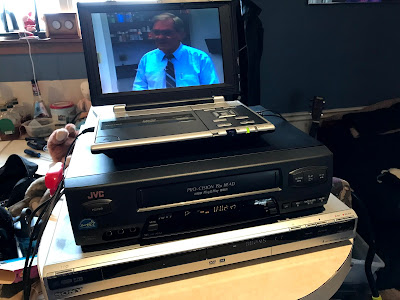


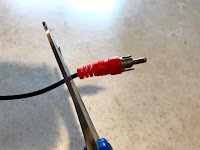


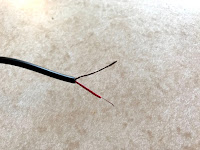
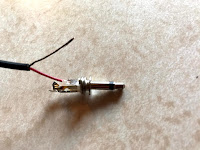



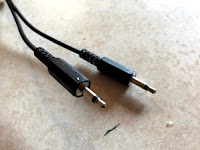



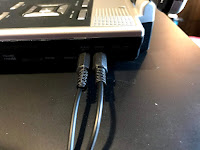

No comments:
Post a Comment